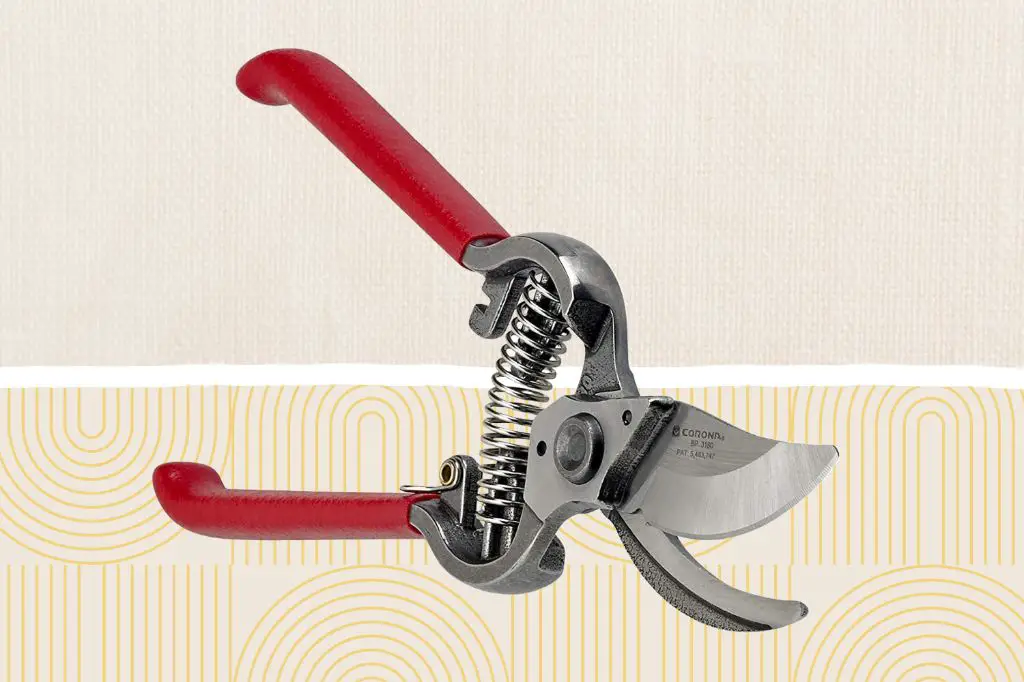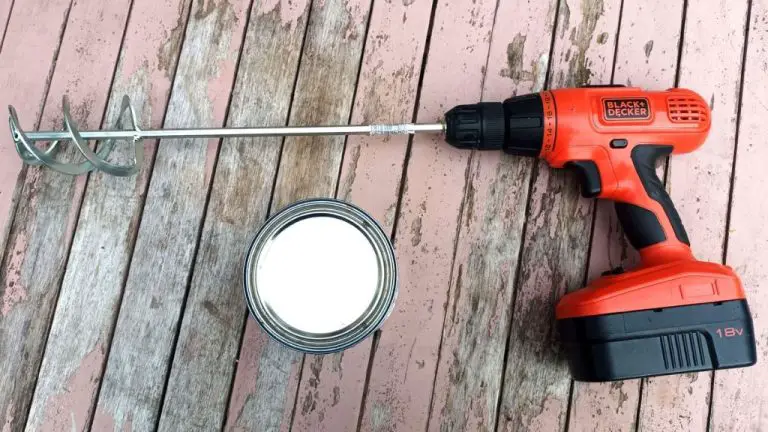What Is A Trimming Tool Used For?
What is a Trimming Tool?
A trimming tool refers to any hand tool used for trimming, pruning, or cutting plants, trees, or other materials. The main types of trimming tools include:
- Scissors – Hand-operated shears with two bladed arms pivoted so as to allow the sharpened edges to slide against each other when closed.
- Pruning shears – Shaping tools used for trimming smaller stems and branches, often incorporating a scissor-like design.
- Loppers – Long handled pruning shears used to trim hard to reach branches.
- Hedge shears – Long, scissor-like blades mounted at the end of long handles used to trim hedges and shrubs.
Trimming tools utilize sharpened blades, usually made of steel or titanium, designed to make clean, precise cuts. Blades may be straight, curved, or serrated depending on the intended trimming application.
Quality trimming tools incorporate ergonomic handles and grips to allow for safe, comfortable handling. Handles may be made of materials like wood, rubber, or plastic. Some trimming tools like loppers feature telescoping handles or gear mechanisms for increased leverage.
Trimming tools range from small scissors for delicate plant or craft work, to long reach loppers and pole pruners for trimming high tree branches. They allow for the quick, precise, and efficient trimming and shaping of plants and other materials.
Uses of Trimming Tools
Trimming tools have many uses but are most commonly used for trimming and maintaining plants, bushes, trees, lawns, flowers and hedges. They allow for precision cutting and trimming of branches, twigs, and plant growth.[1]
Some common uses of trimming tools include:
- Pruning trees, bushes, shrubs – Removing dead branches, controlling growth
- Trimming hedges – Sculpting hedges and maintaining shape
- Cutting flowers – Snipping flowers for arrangements/bouquets
- Trimming lawns/edges – Precision trimming of lawn edges
- Deadheading flowers – Removing spent blooms to encourage new growth
Quality trimming tools allow gardeners to neatly shape and maintain trees, shrubs, bushes, and plants of all kinds. Their sharp blades provide clean, accurate cuts that encourage healthy growth. Trimming tools are essential for any gardening tool kit.
Parts of a Trimming Tool
Trimming tools have several main components that allow them to function effectively for cutting and trimming tasks.
Blades
The blades are the cutting surfaces of trimming tools. They are typically made of hardened steel for strength and durability. The sharp edge of the blade does the actual cutting. Blades come in various sizes and shapes depending on the design and intended use of the tool.
Handles
Handles provide a grip for controlling the trimming tool. Handles are commonly made of materials like plastic, rubber, wood, or metal. The handle size, shape, and texture can be optimized for comfort, control, and reducing hand fatigue during prolonged use.
Gear Mechanisms
Some trimming tools have gear mechanisms that connect the blades to the handles. Gears provide mechanical advantage for increased cutting power and precision. The gearing ratios determine how much effort is needed to operate the tool.
Spring Mechanisms
Many trimming tools utilize springs to allow the blades to retract or close automatically. This provides a safer tool when not in active use. Springs also help absorb shock and impact during cutting. They enable smooth and steady blade action.
Types of Trimming Tools
There are several common types of trimming tools used for different trimming tasks:
Hand Pruners
Hand pruners, also called hand shears or secateurs, are manually operated tools used for trimming smaller stems and branches. They typically have short blades and scissor-like handles to provide leverage for cutting. Hand pruners allow for precision trimming of plants (https://www.thediecasting.com/die-casting-trimming-tools/).
Loppers
Loppers are similar to hand pruners but have long handles that give them greater leverage and cutting power. The long handles allow loppers to cut branches up to 2 inches thick. They are useful for reaching higher branches that are difficult to access with hand pruners.
Hedge Shears
Hedge shears have long, flat blades with serrated edges designed for trimming hedges and bushes. The blades can cut small branches up to around 0.5 inches thick. Some hedge shears have powered options to make continuous trimming easier.
Pole Pruners
Pole pruners have a cutting head mounted on an extendable pole, allowing users to prune high branches without a ladder. The cutting heads have scissor-like blades or saw blades for removing larger branches. Pole pruners provide an easy way to trim tall trees.
Scissors
Gardening scissors, similar to household scissors, are versatile trimming tools good for light trimming of flowers and soft plant growth. Micro-tip scissors allow for detailed pruning in tight spaces. Scissors are less suited for woody branches.
Trimming Tool Blades

The blade is the most important part of any trimming tool. There are two main types of trimming tool blades – bypass and anvil.
Bypass Blades: Bypass blades are made up of two sharp edges that slide past each other in a scissor-like action when cutting. The blades are ultra-sharp and precision ground to give clean and accurate cuts. Most high-end trimming tools use bypass style blades.
Anvil Blades: Anvil blades have a sharp upper blade that closes down against a non-sharpened lower blade. The material is cut between the sharp upper blade and the “anvil” or impact section. Anvil blades provide a crunchy cut and are found on most lower priced trimming tools.
The steel grade and hardness are also important factors for trimming tool blades. High carbon steel blades stay sharp longer but are more brittle. Stainless steel offers good corrosion resistance but doesn’t hold an edge as well over time. Many quality trimming tools use high carbon stainless steel for the perfect balance of edge retention and strength.
Special blade coatings like Teflon or titanium nitride can provide extra protection against friction and corrosion. Some coatings also help the blades glide through material with less effort.
The blade angle or bevel will determine how the blades cut and the type of materials they are best for. Larger blade angles provide more strength for cutting thick or hard materials, while smaller blade angles allow for more precision and control on delicate materials. Most trimming tool blades have angles optimized for fabric, paper, and general crafting use.
Trimming Tool Handles
The handle is an important part of any trimming tool. The material the handle is made from impacts the weight, durability, and comfort of the tool.
The most common materials for trimming tool handles are:
- Wood – Wood handles provide a good grip and absorb vibration well. However, they can crack over time and degrade with exposure to moisture.
- Aluminum – Aluminum handles are lightweight yet strong. However, they transmit more vibration to the user’s hand.
- Fiberglass – Fiberglass handles are durable, weather-resistant, and reduce vibration. However, they can be slippery when wet.
In addition to materials, handle coatings and ergonomic designs can improve grip and reduce hand fatigue:
- Coatings – Rubber, plastic, and textured coatings give extra traction for wet conditions.
- Ergonomic Handles – Contoured handles distribute grip pressure evenly across the hand for comfort during prolonged use.
Choosing the right handle material and design ensures maximum control, reduced fatigue, and a longer lasting trimming tool.
Safety Tips
When using a trimming tool, it is important to follow proper safety precautions. Here are some key safety tips:
Proper Use: Always cut away from your body and be aware of finger placement to avoid injuries. Grip the handles firmly and do not apply excessive force. Make sure the blade is sharp, undamaged, and appropriate for the material being cut. Operate at a safe speed and do not rush the cutting process.
Protective Gear: Wear cut-resistant gloves and eye protection at all times when using a trimming tool. Gloves protect your hands and fingers, while eye protection shields your eyes from flying debris. Aprons, closed toe shoes, and face shields may also be warranted for certain trimming tasks.
Storage: Store trimming tools safely when not in use. Protect the blades with a sheath or case and keep tools in a secure location away from children. Properly maintained tools will have a longer lifespan.
Following proper safety procedures helps prevent injuries and accidents when operating trimming tools. Paying attention and taking precautions allows for safe and effective use of these cutting devices.
Sharpening and Maintenance
Proper sharpening and maintenance is key to keeping your trimming tools in top working condition. Using dull blades can lead to inaccurate cuts, increased hand fatigue, and damage to the clay. It’s recommended to sharpen your trimming tools at least once a month, depending on your usage.
To sharpen the blades, you’ll need a sharpening stone. Look for a dual grit whetstone with a coarse side for grinding and reshaping the edge and a finer side for refining it. Hold the blade at a 20-30 degree angle against the stone and gently sweep back and forth until sharp. Apply even pressure and use circular motions to sharpen the inside curve of loop tools. Clean the blades first to remove any buildup of clay or debris.
After sharpening, wipe down the metal surfaces with a lightly oiled cloth to prevent rusting. Tighten any loose handle screws. Replace handles that are cracked, worn, or loose. Check that moving parts like levers and wheels turn smoothly and make adjustments as needed. Proper maintenance will keep your trimming tools performing optimally for years.
Top Trimming Tool Brands
When it comes to top quality trimming tools, there are a few major brands that consistently rise to the top. Some of the most popular and well-respected trimming tool manufacturers include:
Fiskars
Fiskars (https://www.thestudiomanager.com/posts/the-best-loop-tools-for-trimming-pottery) is a leading brand known for its high-performance scissors, shears, and trimming tools. Their products feature durable stainless steel blades that provide clean, precise cuts. Fiskars trimming tools like the PowerGear2 bypass pruner are ergonomically designed for comfort and control.
Felco
Felco (https://www.reddit.com/r/Pottery/comments/6ipzni/what_are_some_good_trimming_tools/) is a Swiss company that produces premium quality trimming shears and secateurs. Their tools are trusted by professional gardeners and landscapers. Key features include lightweight aluminum alloy handles, adjustable blades, and options like sap grooves and wire cutters.
Corona
Corona (https://www.baileypottery.com/store-dept-pottery-ceramic-tools/store-trimming-pottery-tools.html) manufactures long-lasting trimming tools from high carbon steel in the United States. Their razor tooth pruning shears and loppers provide clean, precise cuts. Corona’s ergonomic handles reduce hand fatigue.
ARS
ARS Corporation is a Japanese company known for trimming tools like bonsai scissors. Their shears feature hand-honed convex ground blades for smooth, effortless cutting. ARS secateurs are lightweight while still providing durable, hardened steel blades.
Okatsune
Okatsune is a Japanese brand specializing in professional-grade gardening shears. Their trimming tools are forged from premium hardened stainless steel. Key features include adjustable pivot bolts, comfort grip handles, sap grooves, and replaceable parts.
Silky
Silky is a leading Japanese manufacturer of trimming saws. Their curved saw blades allow for precise, detailed cutting. Silky pruning saws feature razor-sharp impulse-hardened teeth and replaceable blades. Their lightweight aluminum alloy handles reduce hand fatigue.
Trimming Tool Costs
Price ranges for trimming tools can vary greatly depending on the type, brand, materials, and features. Basic hand trimming tools like pruners and loppers can cost as little as $10-50 for lower quality options from hardware stores. For professional quality tools, expect to pay $50-150 for bypass pruners, $80-250 for anvil pruners, and $100-300 for compound loppers. Pole pruners and pole saws have similar price ranges from $50-150 for basic models up to $250 or more for commercial grade poles with greater reach.
Hedge shears range from $20-60 for manual shears up to $100-500 for powered hedge trimmers. The most expensive electric and gas-powered hedge trimmers designed for commercial use can cost $300 or more. For bonsai enthusiasts, specialized concave cutters and leaf trimmers can cost $30-60 or more per tool. Miniature bonsai scissors and shears are $20-40. Full bonsai tool kits with multiple high-end tools can cost over $200.
In general, factors like carbon steel blades, lightweight aluminum or fiberglass handles, gear or pulley mechanisms, telescoping poles, electric motors, and rechargeable batteries increase the costs of trimming tools. With proper care and maintenance though, investing in quality tools from reputable brands can be worth the higher price for longevity and performance.



